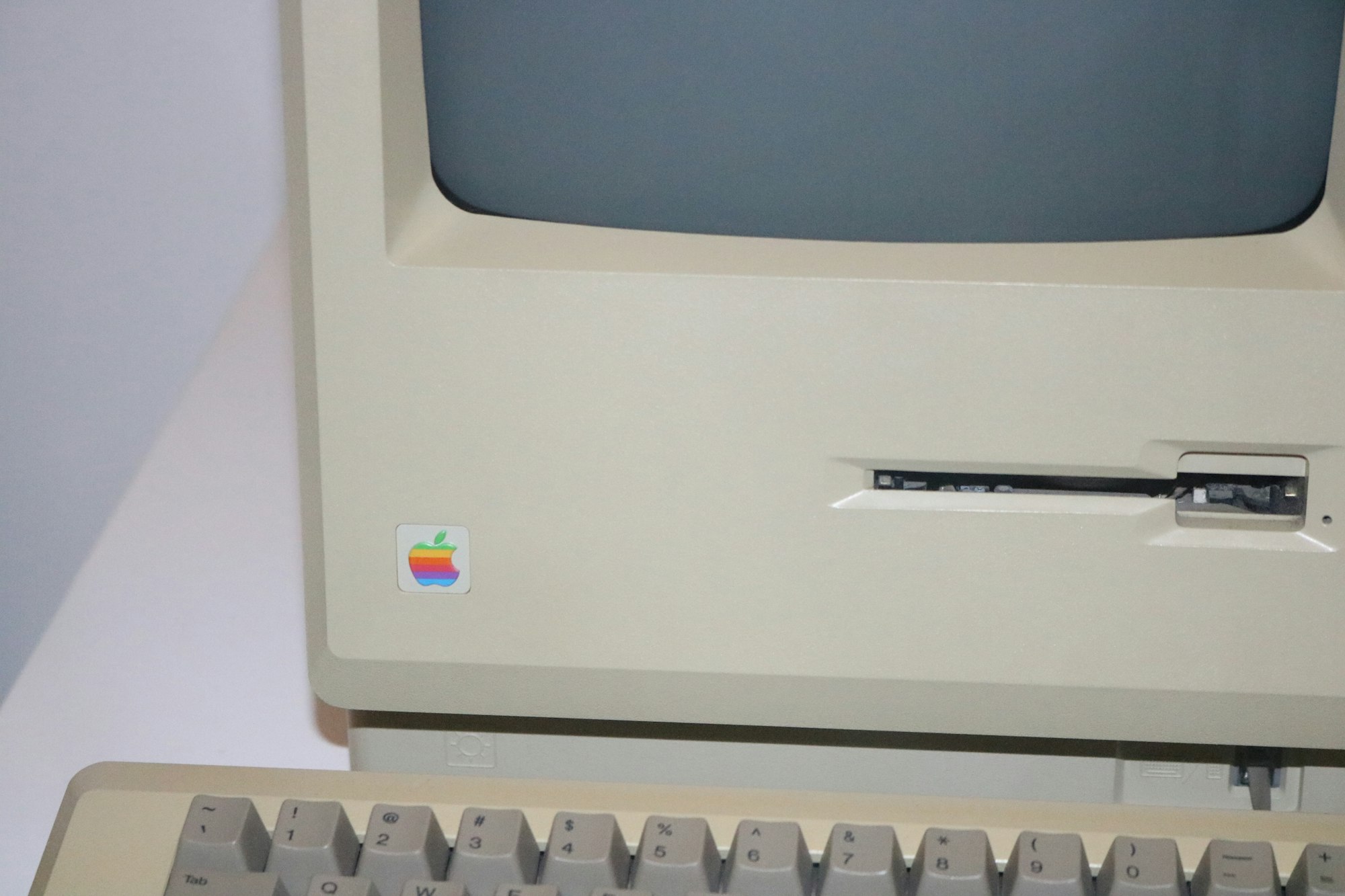Fast-Track to the Future: The Power of OMS in Digital Transformation
Digital transformation isn't just a buzzword—it's crucial for your business' success. Everything is going digital, and if you want to keep up with the ever-changing market, you have to start doing business in the digital domain.
Unfortunately, achieving successful digital transformation demands not just tweaks but a whole new arsenal of technologies and solutions. Unless you take the shortcut, that is, and adopt an Order Management System (OMS) for your business.
OMS as the tool that seamlessly connects your old-school processes with the demands of the digital era. This technology connects your existing IT systems and well-worn business processes with the shiny, new digital sales and business models you need to stay relevant in the current market.
In this article, we'll break down the reasons why OMS is the digital transformation game-changer you've been searching for. We will show how OMS can seamlessly integrate networked digital commerce functionality into your setup, turbocharging your operations without the risk of a complete overhaul.
Let's go!

Digital Transformation—Where to Start?
A common puzzle confronts many companies right at the outset of their digital journey: How do we ready our existing IT setup for the demands of digital commerce?
Embarking on digital transformation requires businesses to strategically adapt their IT foundations for the intricacies of digital commerce. This isn't merely about upgrading your existing technologies and systems—it's about using technology to elevate digital sales, streamline operations, and enhance customer satisfaction in an intensely competitive market.
The challenge spans organisational structures, affecting both business processes and IT.

Dealing with Legacy IT Infrastructure
Transforming legacy IT structures into digital-ready powerhouses involves navigating a landscape rife with complexity. The challenge stems from a mix of organic growth, autonomous decision-making, and the burden of ageing systems laden with customisations.
As these reliable but dated systems struggle to meet modern demands, businesses must strategize their approach to surmount the hurdles of the digital era.
As companies venture into the realms of digital transformation and interconnected operations, a formidable challenge often emerges in the form of legacy IT landscapes that have organically evolved into intricate webs of complexity.
This complexity can be attributed to several factors, with two primary culprits standing out:
1. Organic Growth and Autonomy
Companies, whether through mergers and acquisitions or empowered individual entities, find themselves with disparate IT setups. Each location, department, or subsidiary might exercise a high degree of autonomy in their IT decisions, contributing to the intricate web of legacy systems.
2. Ageing Systems and Adaptations
Many systems have been in service for an extended period, rendering them outdated. Upgrading becomes a formidable task, both in terms of complexity and expense. Moreover, these systems often bear the weight of heavy customizations tailored to meet the specific needs of various departments and business processes.
The consequence? A labyrinth of interconnected systems reliant on point-to-point integration, fostering complexity and mutual dependencies.
While these legacy systems may have operated reliably for years, garnering user satisfaction, they face a significant drawback—an inability to keep pace with the evolving landscape of customer demands and the digitization of commercial processes.

The problem of sticking with your old, outdated IT technology
Operating in today's digital marketplace with antiquated IT infrastructure spells trouble for a company's growth trajectory. The challenges of persisting with outdated systems create operational roadblocks that impede progress in several ways:
1. Elevated IT Costs and Risks
Adapting ageing legacy systems to meet modern demands comes at a price – higher IT costs and increased risks. The intricacies of expansion become apparent, making it a complex task to seamlessly integrate new systems into the existing IT landscape.
2. Tedious Expansion Processes
The integration of new digital channels or partners becomes a laborious and time-consuming affair. This not only impedes the swift expansion into new markets but also hampers the development of standardised product and service offerings across diverse locations and companies.
3. Lack of Agility
Companies find themselves shackled without the agility to respond promptly to evolving customer demands or market conditions. Testing innovative sales and business models, as well as introducing new products or digital services, becomes a sluggish process.
4. Visibility Challenges
Maintaining or enhancing service quality becomes an uphill battle when there's a lack of complete visibility into customer interactions, orders, and inventories. The result? Dissatisfied customers and escalated costs.
In short, the decision to cling to outdated IT infrastructure in a digital era spells hindrance to growth. The repercussions include elevated costs, sluggish expansion, a lack of agility, and visibility challenges that can lead to dissatisfied customers. Embracing modern solutions becomes imperative for companies seeking not just survival, but thriving in the dynamic landscape of the digital marketplace.

Taking the Digital Transformation Leap
As companies stand at the crossroads of consolidating and integrating their existing IT landscapes, two distinct options come to the fore:
1. Complete System Replacement
Picture this as swapping a car's engine while it's still in motion – a bold move with inherent challenges. Opting for a complete overhaul of existing systems is a time-consuming and expensive endeavour, fraught with operational risks.
The added value remains elusive until the new systems are fully deployed. Pre-emptive staff training becomes essential, often requiring the overcoming of resistance to the introduction of new systems. The pace required for successful digital transformation is jeopardised by the ambitious nature of this approach.
2. Adaptation or Expansion of Existing Systems
An alternative approach involves tweaking or expanding the current IT systems. While effective in addressing immediate concerns, it introduces a dilemma for the future. The extent of customisation and the number of integrated systems directly correlate to the complexity of implementing future changes.
Herein lies a critical issue – successful digital transformation hinges on the ability to swiftly respond to shifting customer needs and market conditions. The agility of a company, measured by how flexibly its IT resources and business processes adapt to change, is compromised by a highly customised IT landscape.
Choosing the path to digital transformation involves critical decisions. The dichotomy between a complete system replacement and adapting existing systems poses challenges.
While the former is time-consuming and costly, the latter, marked by high customisation, can impede agility.
Striking the right balance is essential for companies aspiring to not just survive but thrive in the ever-evolving landscape of digital business.

Why Adopting OMS Technology is the First Step
When it comes to digital transformation, adopting an OMS can be seen as an effective shortcut that will providing long lasting and effective results.
OMS emerges as the low-hanging fruit that transforms not just transactions but the very essence of your digital business.
Positioned at the core of a stellar customer experience, the functionalities of Order Management serve as the rhythmic heartbeat of a successful digital business.
Here's why it's the game-changer you've been seeking:
1. Seamless Commerce Transactions
Order Management orchestrates the entire life cycle of a transaction, from the initial click on 'buy' to cart management, order fulfilment, and finally, the delivery that fulfils your brand promise. It goes beyond the transaction—it's about building customer loyalty by ensuring a smooth, end-to-end experience.
2. Reducing Costly Fulfilment Errors
The impact of an erroneous first-time order on a customer is profound. An Order Management System (OMS) acts as the guardian of your brand's reputation by preventing such missteps. It ensures that customers don't just hear about the greatness of your products and services but get to experience it firsthand.
3. Driving Customer Satisfaction
Positioned on the backend of your ecommerce business, an OMS is the engine that propels your customer's overall shopping experience. In a world where customers demand a frictionless post-purchase journey, from seamless checkout to timely delivery, an OMS is the driving force.
Customers today seek flexibility, whether it's same-day shipping or the convenience of picking up an item from a brick-and-mortar store. An OMS caters to these demands, providing visibility and real-time updates throughout the entire process.

OMS Makes the Unified Customer Experience Possible
In the era of heightened consumer expectations, the pursuit of personalised omnichannel experiences has prompted a strategic rethink for companies and ecommerce organisations. Customer experience optimization now stands as the foremost priority.
With the surge in online channels, the imperative to collect and analyse data for valuable customer insights has never been more critical. This is where the concept of unified commerce takes centre stage.
Unified commerce represents the evolutionary pinnacle of an omnichannel strategy. It seamlessly merges an organisation's channels, systems, products, and customer orders into a singular platform.
This consolidation extends to all backend systems, creating a cohesive framework for all customer-facing touchpoints. The outcome is a comprehensive 360-degree view of customer interactions, orders, and a bird's-eye view of products and inventory across all channels. This unified approach is the key to delivering enhanced shopping experiences.
At the heart of making this unified commerce experience possible is the Order Management System (OMS).
Here's how an OMS propels this transformation:
1. Data Mastery
An OMS serves as a repository for tracking and storing valuable customer data. It becomes the central hub for processing orders, allocating order distribution, and ensuring synchronisation across all systems in the supply chain, fostering a holistic customer view.
2. Orchestrating Seamless Operations
The efficiency of an OMS extends to orchestrating orders across diverse channels, store locations, and suppliers. It facilitates essential capabilities such as Buy Online Pickup In-Store, streamlining backend operations and contributing to cost reduction.
3. Streamlining Order Flow
A robust ecommerce Order Management System automates and streamlines the entire order flow, from the point of purchase to the customer. It seamlessly processes orders from multiple channels – be it ecommerce, mobile, call centre, or social platforms.
Moreover, it allocates orders to various fulfilment sources like warehouses, vendor drop-ship partners, and brick-and-mortar stores, diligently tracking the order's journey to the customer.

5 Ways OMS Helps You Meet and Exceed Customer Expectations
In the realm of customer expectations, an Order Management System (OMS) emerges as a strategic ally, offering five critical ways to elevate customer satisfaction:
1. Simplifying Order Servicing
Bridging the gap between commerce, service, and sales efforts is paramount. An OMS seamlessly integrates disparate systems, providing agents with comprehensive visibility to better serve customers. This includes real-time information on order status, nearby stores or pickup locations, order modifications, and merchandise returns.
2. Offering Flexible Shipping and Delivery
Flexibility in shipping and delivery options is a great way to earn customer loyalty and trust. An OMS plays a pivotal role in avoiding order-specific errors, ensuring that 70% of businesses that lost customers due to such errors can be on the winning side.
3. Enabling Self-Service Options
Automation is the key to empowering customers through self-service options. Whether it's chatbots or artificial intelligence, an OMS enables all channels to offer self-service functionalities, allowing customers to check orders, modify or cancel them, and receive updates through their preferred channels.
4. Managing the Entire Order Lifecycle
Agility in managing the post-purchase journey is essential for customer satisfaction. An OMS tracks and manages orders from fulfilment to payment, customising business processes for efficiency, unlocking a unified view of the fulfilment process, and providing data and insights to drive future purchases.
5. Streamlining Inventory
Fulfilling orders from anywhere becomes a reality with a connected backend across all networks and distribution locales. A streamlined inventory, facilitated by an OMS, ensures a fast and easy ordering experience for customers. By optimising factors like delivery speed and cost to fulfil, businesses can increase profitability and navigate around inventory bottlenecks.

Conclusion
In businesses worldwide, leaders are constructing digital supply chains for full visibility, resilience, and sustainability. This is because the handling of inventory and fulfilling orders stands as a critical aspect.
Today's Order Management System (OMS) is not just a tool—it's a powerhouse incorporating advanced, cross-channel order processing. It's here to offer insights into vital data, aiding better decisions in merchandising, returns, inventory, and marketing.
As the nerve centre of business, the modern OMS adapts to the ever-changing market and consumer demands. In our contemporary world, unified commerce is not just a fancy phrase—it's about being agile, scalable, and extensible.
Think of the OMS as the beating heart of a great customer experience, functioning like the circulatory system, orchestrating all order management functions seamlessly.
The pandemic has accelerated the need for omnichannel services like Buy Online Pickup in Store (BOPIS) and Curbside Pickup, adding layers of complexity. The OMS steps in seamlessly, synchronising backend operations—managing orders, customer data, inventory levels, product information, and fulfilment data.
It's a comprehensive process, ensuring the smooth handling of customer orders from the inbox to timely delivery.
An effective Order Management System is the lifeline for managing the entire order lifecycle with accuracy and punctuality, ultimately ensuring customer satisfaction. This robust system allows businesses to streamline operations, elevating service quality and meeting customer expectations with unmatched efficiency.
In summary, embracing a cutting-edge Order Management System isn't just about keeping up—it's about staying ahead in a dynamic market. The agility, scalability, and efficiency it brings can transform your business landscape.
Don't just follow the trends—set them. It's time to adopt this technology, revolutionise your operations, and create a customer experience that sets your business apart. Seize the opportunity, embrace the future – the future of successful and seamless order management.